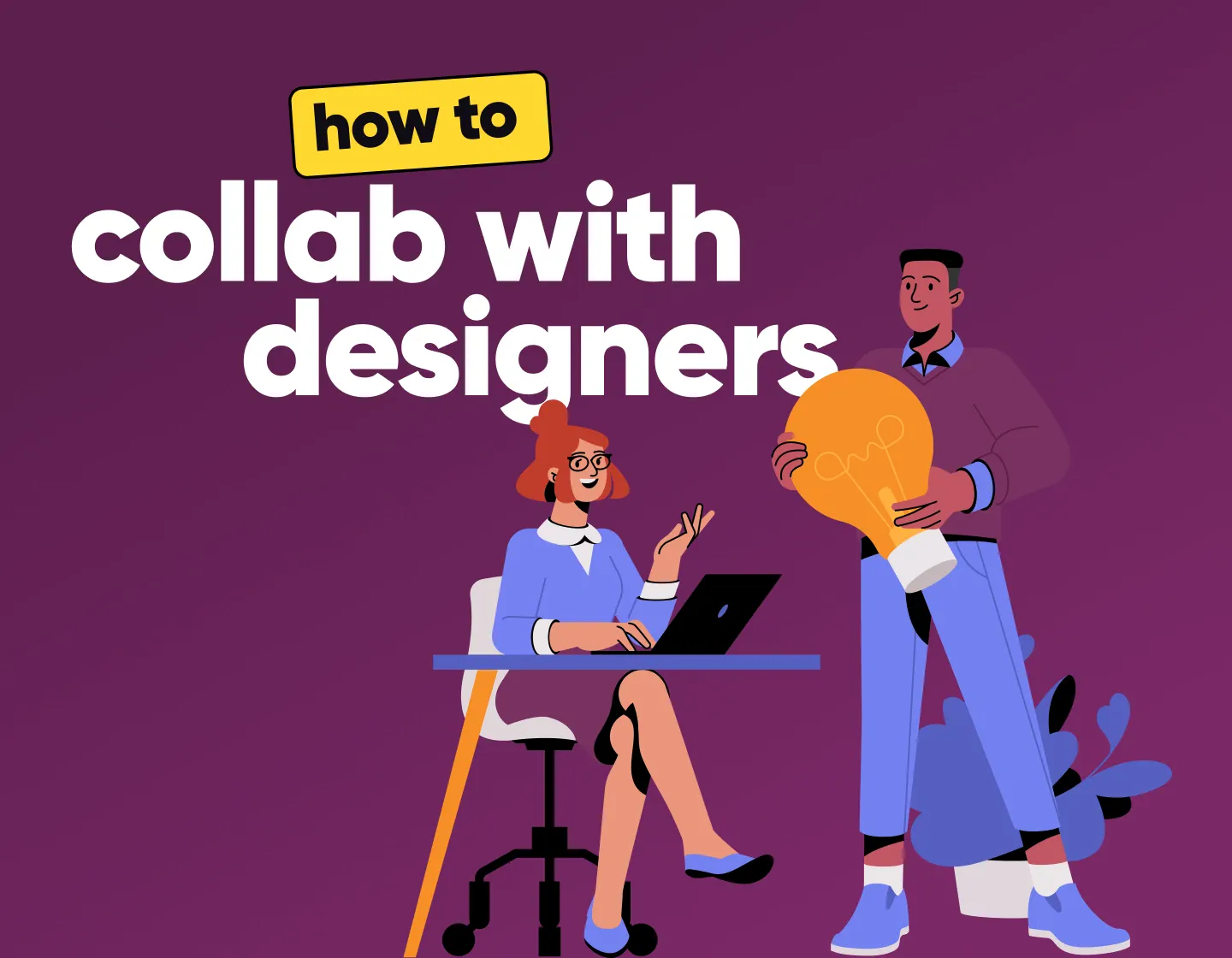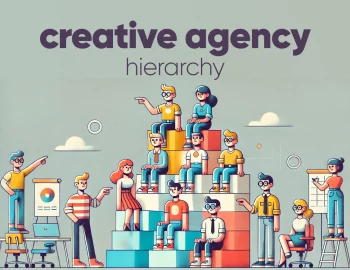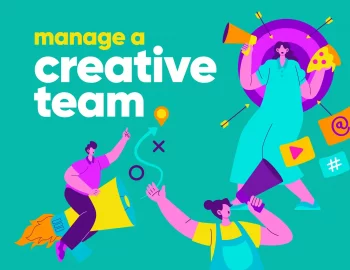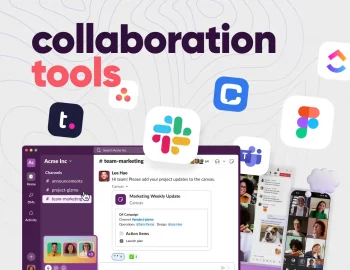Great design doesn’t magically happen at the end of a project. It’s the result of thoughtful collaboration, clear communication, and just enough structure to keep creativity thriving. So, whether you’re working with in-house designers or bringing in freelance magic, knowing how to collaborate with designers can make or break a project.
Having misaligned briefs, rushed timelines, and vague feedback means being on the fast track to frustration (for everyone). But when everyone’s in sync from the start, it’s smoother sailing all the way to delivery. That’s why I came up with this guide – to help you build that kind of partnership, one where strategy meets creativity, and everyone wins. Let’s roll!
1. Start Strong: Involve Designers Early, Not Just When It’s Time to “Make It Pretty”
Bringing designers in early – before the big ideas are baked – helps you avoid creative bottlenecks. Why? Because design isn’t just how something looks, it’s how it works.
When designers are part of the initial strategy conversations, they gain valuable context: what the client’s really asking for, what success looks like, and how the brand needs to evolve. Instead of playing catch-up later in the process, they become proactive partners who can flag challenges early, suggest smarter formats, and connect the dots across teams.
Early involvement also builds a sense of ownership. Designers who understand the “why” behind the work tend to bring sharper thinking and more relevant ideas to the table and collaborate better in general. That doesn’t just make your job easier – it leads to stronger outcomes and smoother reviews down the line.
Real Talk: A designer brought in at the end equals a design that looks good but doesn’t solve the right problem.
2. Set the Stage with a Solid Creative Brief that Actually Helps
Graphic designers aren’t mind readers, and even the best ones can’t do great work without a solid foundation. That’s where a real, actually helpful creative brief comes in.
At its core, a good brief answers the why, what, and how, not just the when. It should give designers clear direction without boxing them in creatively. Think of it as a bridge between strategy and execution: it translates business goals into creative opportunities.
Background → Objectives → Key messages → Tone/Look & Feel → Deliverables → Timeline
What designers really want from a brief?
✓ Clear goals
✓ A sense of the target audience
✓ Any mandatory constraints (like brand guidelines, technical specs, or design elements)
✓ Project deliverables spelled out clearly (no surprises!)
✓ And – this one’s underrated – a sense of the project’s vibe. A few words about tone, energy, or visual direction go a long way.
Bonus: Want to level up your briefing game? Check out our guide to writing creative briefs that don’t suck.
3. Build a Shared Language: Clarify Expectations Upfront
We’ve all heard the classics: “Can you make it pop?” “Let’s keep it clean but fun.” “Can we just add a little something to make it more visually appealing?” While well-intentioned, vague feedback like this leaves graphic designers guessing and often going in circles trying to hit a moving target.
That’s why building a shared language from the start is a game-changer. It’s not about learning graphic design vocabulary or pixel-perfect specs – it’s about being specific, aligned, and intentional with your words.
And luckily, there are tools that help make collaborating on projects easier. For instance, Figma comments are great for real-time annotations and quick clarifications. Loom videos are a lifesaver when feedback needs more nuance, plus they let your tone and intent come through. Slack threads or even short voice memos are great for asynchronous communication. Not every conversation needs to be a group meeting.
When it comes to giving feedback, decide early:
- When will feedback rounds happen?
- Who should weigh in (and when)?
- What does “final files” really mean for this project?
Setting expectations around these things early keeps projects running smoothly, everyone on the same page, and reduces last-minute surprises.
4. Respect the Creative Process: Balance Timelines with Breathing Room
Here’s the thing: design isn’t just decoration. It’s problem-solving – visual, strategic, user-centered problem-solving. So when designers are treated like task rabbits who just “make things look nice,” the work suffers. And honestly? So does the timeline.
To get the best out of design, you need to make room for thinking, not just doing. A rushed schedule that leaves zero space for exploration will almost always lead to shallow work and more revisions later. On the flip side, even a little bit of built-in breathing room can unlock great ideas and smarter, more strategic design solutions right from the start.
So, how do you balance creative freedom with real-world deadlines?
Start by being transparent about time constraints without making every request feel like a fire alarm. When urgency is real, say why. (“Client review is locked in for Thursday, so we need version 1 by Wednesday, end of the day.”) And when there’s wiggle room, protect it. Communicate and collaborate early and often, and trust your designer to use the time wisely.
5. Structure Feedback to Be Clear, Useful, and Actionable
Giving feedback shouldn’t feel like walking through a foggy maze. But too often, graphic designers are left deciphering comments like, “I liked version 2’s colors… but can we also make it more like version 1?” That’s how you end up with Frankenstein designs and frustrated creatives.
The fix? Follow the “4 Cs” of great feedback: Clear, Constructive, Contextual, and Considerate.
- Clear means saying what you mean – no vague vibes, no buzzwords.
- Constructive is about focusing on how to improve, not just what’s “off.”
- Contextual ties the feedback back to project goals or user needs.
- Considerate respects the designer’s effort, even when changes are needed.
Tip: Before sharing feedback, group it. Run a quick internal alignment if needed. Designers shouldn’t have to filter through ten conflicting opinions and guess whose vote counts.
Pro Tip: Ask yourself, “Does this feedback support the project’s goals – or is it just a personal preference?” Clients don’t pay for your favorite color combination. They pay for results that align with strategy.
This helps structure reviews without overwhelming or deflating the creative flow. And it creates a healthy rhythm for a working relationship that builds trust over time.
Bonus tip: Internal vs. client feedback: How to filter and frame it
Not everything a client says should be passed along word-for-word. Your job is to translate, not just forward. Filter feedback through the lens of clarity and alignment – then frame it in a way that gives designers the insight (not just the noise) they need to take action.
6. Run Smart Reviews: Streamlined, Structured, and Collaborative
Design reviews don’t need to be chaotic or painfully long. A little structure goes a long way in keeping things focused and productive.
Start by setting an agenda before each review:
- What stage is the design in (concept, mid-fidelity, polish)?
- What kind of input is truly needed at this point?
- Who needs to be in the room, and who can give feedback asynchronously?
Make sure to define client feedback windows early in the process and stick to them. There’s nothing worse than hearing, “Actually, the client just had one more thought…” the night before launch.
7. Collaborating is Culture: Build Long-Term Trust with Your Designers
You can’t build great creative work without building great collaborative relationships. Better collaboration isn’t just a tactic – it’s part of the culture you create every day.
Start by celebrating wins loudly and often. When a graphic designer nails the brand tone, saves a project from a creative detour, or brings ideas to life that delight the client, call it out. Recognition goes a long way in reinforcing mutual respect in working relationships (not that it doesn’t apply to real life the same way).
Trust is built in the little moments, too. Having clear communication, asking questions instead of giving top-down directives, looping in designers early, and creating space for design perspectives in decision-making – it all adds up.
8. Build Your Collaboration Toolkit
You’ve got the mindset and the skill set, now here’s the muscle. Collaboration doesn’t have to be reinvented from scratch each time, especially when a few smart tools can help you work faster and better with your design team.
Here’s what to keep in your back pocket:
- Creative Brief Template
To help you out, we’ve put together a free brief template that covers everything, so you don’t end up with a half-baked doc that raises more questions than it answers. - Feedback Framework
Use this bonus framework: What’s working → What’s unclear → What needs to change, to keep your notes sharp and to the point, so you can create a clear structure to guide every round of feedback. Pair it with the “4 Cs” (Clear, Constructive, Contextual, Considerate) and you’re golden. - Design Review Checklist
This one keeps your meetings tight and productive:- What project stage is this?
- What kind of feedback is needed?
- Who’s providing input and when?
- What are the next steps?
- Design Collaboration Timeline
Map out what team members are involved at the different stages – from strategy to wireframes to final delivery – so no one gets looped in too late or left guessing what’s next.
Keep these tools handy, revisit them often, and tweak as your team evolves. Because the best systems aren’t rigid – they grow with you.
Bottom line
At the heart of great design collaboration isn’t just process – it’s trust. It’s the belief that when project managers and designers collaborate with clarity, empathy, and a little structure, they can create work that’s not only on time and on brand but genuinely impactful.
Because in the end, better collaboration doesn’t just keep everyone on the same page and the project on track – it raises the bar for what’s possible. And when that happens? Everybody wins. Especially the client.
Want to learn more about how to manage your creative team or what the right tools for smoother collaboration and communication are? Check out here:





